10 Essential Elements for Efficient Laboratory Management
Science is not easy, especially under relentless pressure to deliver results faster. Unfortunately, more often than not, operational hurdles get in the way. Samples getting misplaced, inconsistent documentation, and experiment handoffs lacking the clarity necessary for reproducibility can derail even the most innovative research projects. More often than not, these failures are managerial.
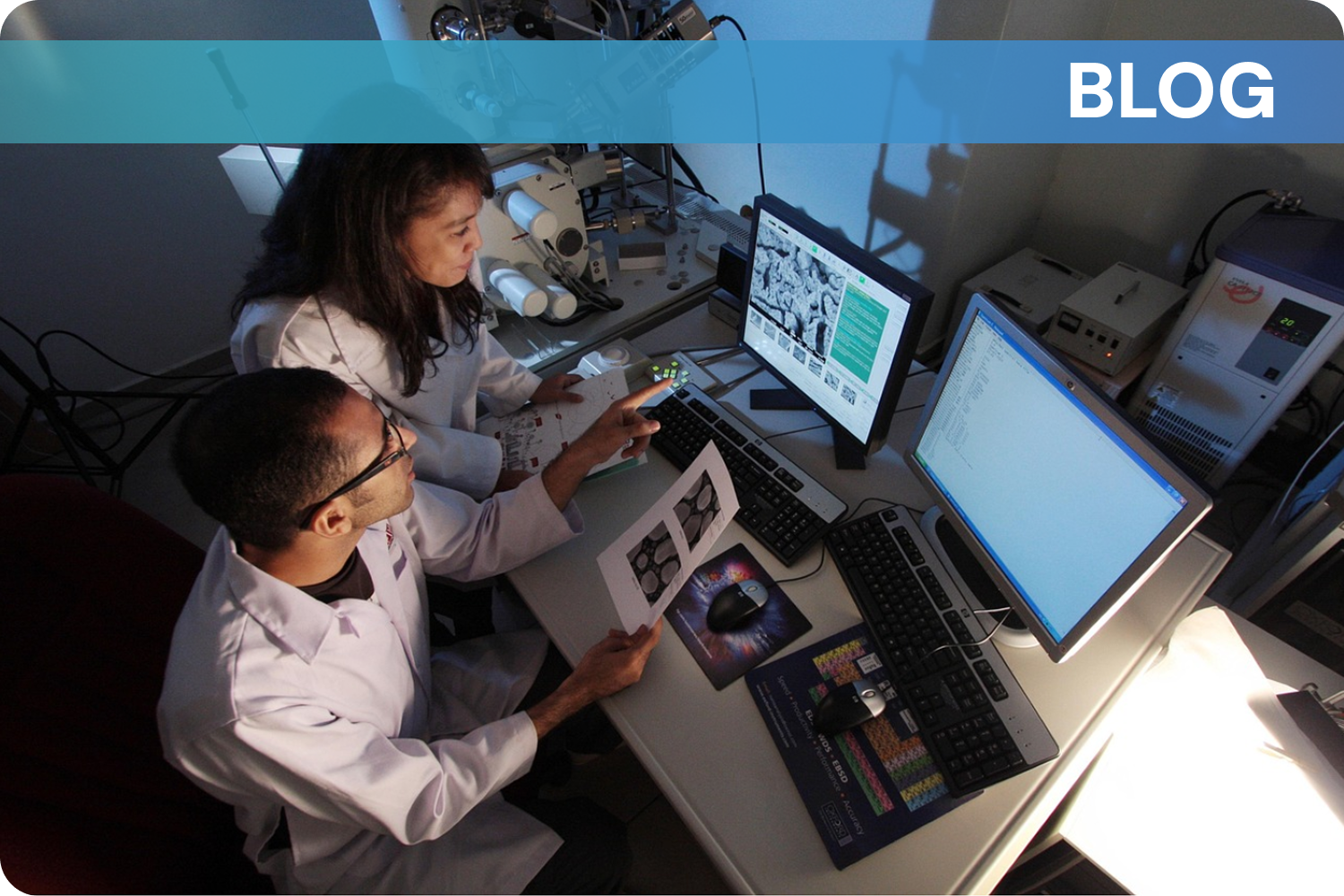

Laboratory management puts in place the framework necessary to prevent unfortunate mishaps with a methodology of structured, traceable operations. Efficient lab management interlinks samples, materials, equipment, personnel, procedures, and data into a cohesive and efficient workflow. Turning chaos into order has its measurable benefits. For example, efficient laboratory management has been reported to increase throughput by 53% of biopharma leaders, and 45% reported fewer human errors in their labs after implementing modernized lab management procedures and practices.
If you're ready to improve laboratory management practices, here are several practical steps you can take today to strengthen operational efficiency.
What is laboratory management, and why is it important?
Laboratory management is the synergetic combination of the strategic, operational, and cultural processes that ensure an R&D laboratory runs efficiently, safely, cost-effectively, and in alignment with organizational goals.
The aim is to create a structured and documented policy for operations that links all lab components (such as equipment, sample data, compliance records, and budget allocation) to drive innovation.
When it comes to businesses operating in industries like pharmaceuticals, chemicals, food & beverage, and advanced materials, efficient laboratory management practices are critical. Between regulatory requirements, high data complexity, and constant pressure to accelerate R&D timelines, the efficiency of your lab operations has a direct impact on your bottom line.
Ideally, your lab should be managed in a way that ensures that:
- Researchers, engineers, and production teams can easily access accurate, up-to-date information.
- Compliance requirements are met with minimal disruption.
- Resources are allocated for maximum impact.
Many modern labs have moved away from paper-based methods to Scientific Data Management Systems (SDMS) like Laboratory Information Management Systems (LIMS), Electronic Lab Notebooks (ELNs), and materials informatics platforms. Having the right approach and technology integrated into your laboratory management is a fundamental keystone of efficient laboratory management.
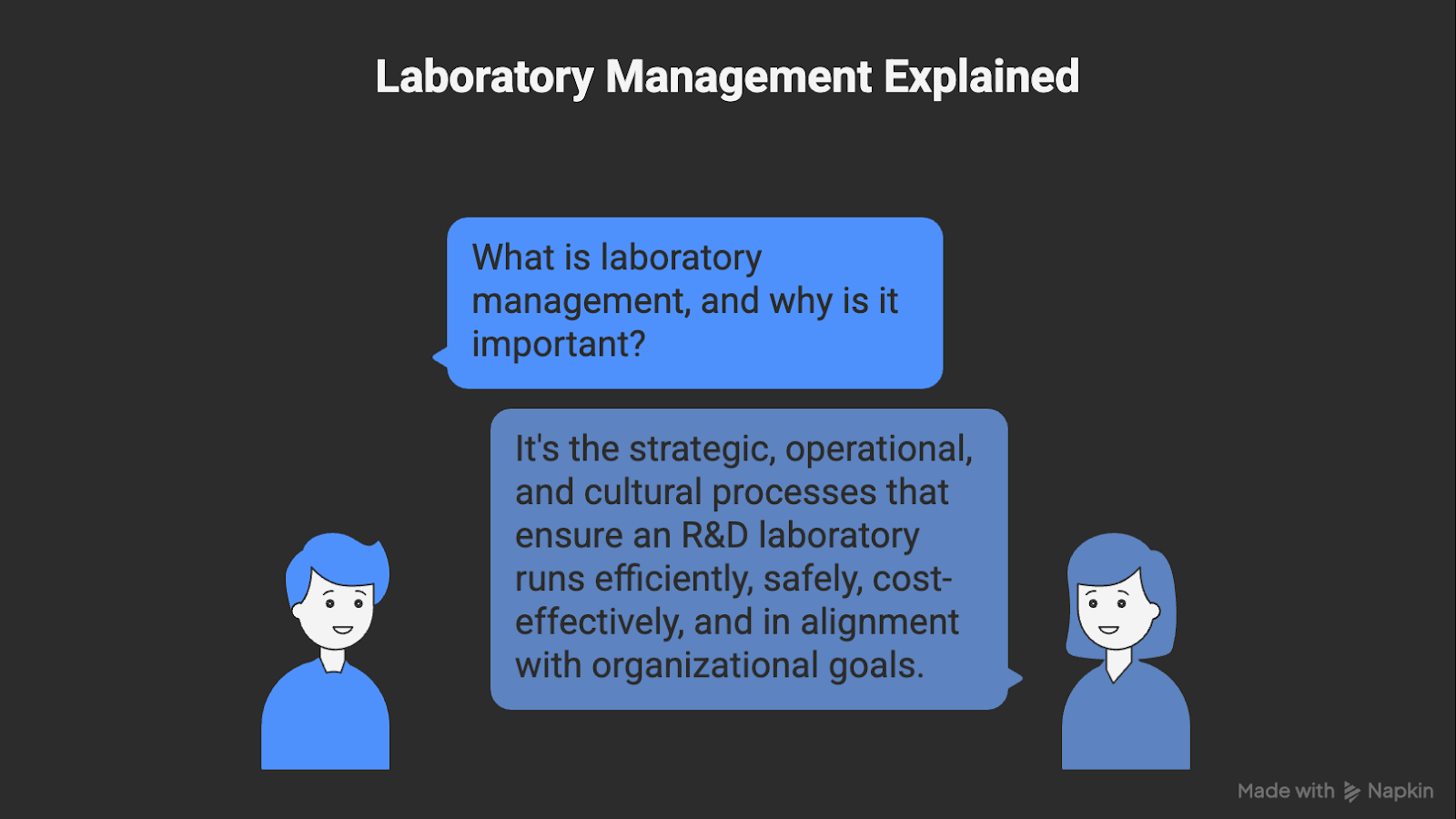
5 Key Benefits of Efficient Laboratory Management
Managing your laboratory the right way offers numerous benefits, including:
1. Accelerated R&D Timelines
Efficient laboratory management practices eliminate operational bottlenecks and streamline workflows, resulting in dramatically shorter development cycles. For companies racing to get new materials-based products to market, this is one way that efficient laboratory management translates directly into measurable competitive advantage.
2. Higher Productivity and Resource Utilization
Running a lab isn't free. In fact, it's quite expensive. Efficient laboratory management ensures optimal use of all your resources, including personnel, equipment, supplies, and software tools, to avoid costly disruptions and operational downtime, while increasing R&D throughput without additional investments.
3. Improved Data Integrity and Decision-Making
Digital tools like LIMS, ELNs, and materials informatics platforms enable researchers to base decisions on accurate, up-to-date information rather than scattered, inconsistent records. These software solutions can improve lab data management efficiency by as much as 41%.
4. Reduced Compliance Risk
Regulatory adherence is non-negotiable in R&D for highly regulated industries. Effective laboratory management embeds safety protocols, SOPs, and real-time audit readiness into everyday lab procedures without added overhead.
5. More Successful Innovation
Strong collaboration and transparent cross-functional communication improve both the pace and quality of innovation. By efficiently breaking down data silos, labs avoid duplicated experiments and accelerate the discovery of high-value solutions.
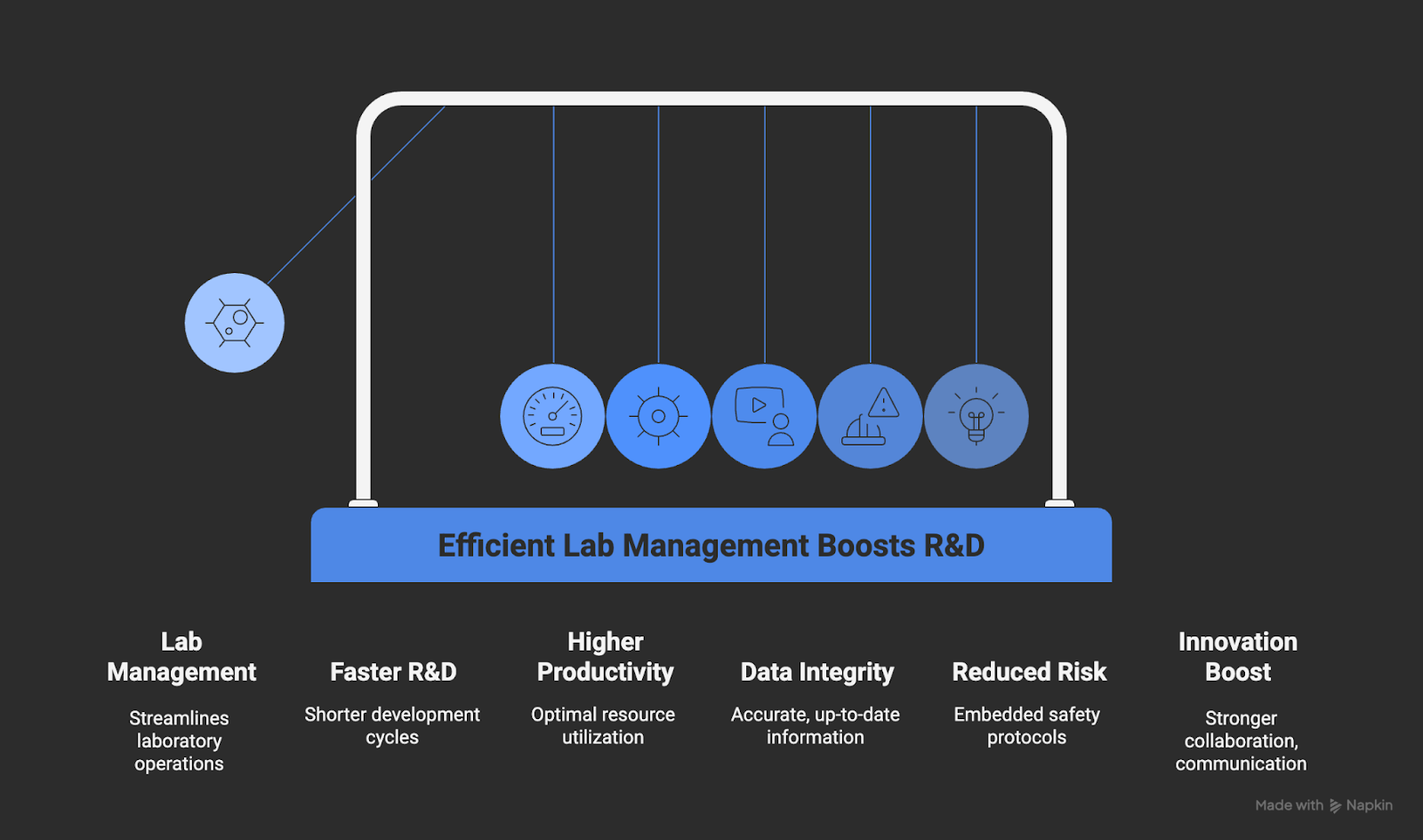
Efficient Laboratory Management: 10 Essential Elements
Implement these ten elements into your lab management protocols to increase efficiency and gain the benefits that come with it:
1. Strategic Planning
Keeping an R&D lab focused on the work that matters most requires clear and well-documented strategic planning. It's a process of defining research objectives, mapping them to business priorities, and setting realistic milestones to ensure long-term projects progress without costly delays or detours.
Strategic planning in laboratory management also helps anticipate regulatory requirements and market timelines, ensuring discoveries are ready when business opportunities arise.
2. Resource and Equipment Management
Even the most promising R&D program can be easily derailed by poor asset oversight and its impact on project budgets. Successful labs see their equipment and consumables as nothing short of strategic resources. These resources need to be carefully monitored, maintained through preventive measures, and tracked for inventory and usage trends to avoid delays or waste.
While most labs have transitioned from manual and outdated resource management methods, those that rely on them often lag behind the competition and miss critical business opportunities. Today's industry best practices include implementing digital tools and inventory management software that help maintain accurate, secure data and asset usage records. These solutions enable managers to leverage lab automation for tasks like material ordering, equipment calibration, scheduling, and alerting.
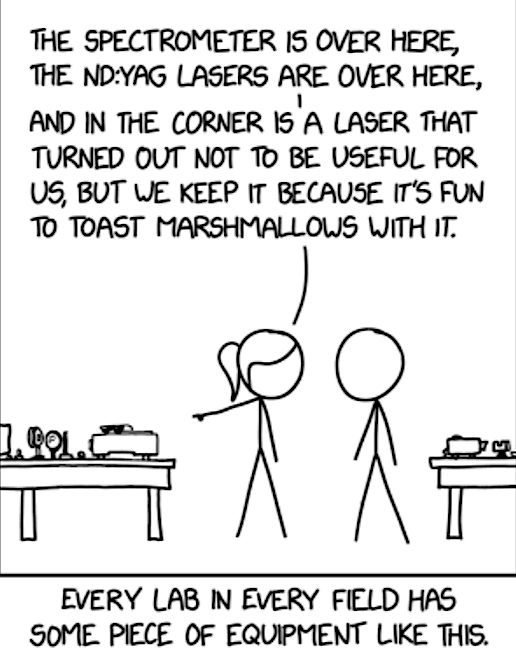
3. Safety and Compliance
Safety and compliance are at the core of every successful laboratory. While protecting people and assets is critical, adherence to compliance practices also ensures outputs meet regulatory and industry standards such as Good Laboratory Practice (GLP), ISO, or FDA requirements.
Lab safety rules should be an integral part of daily operations. Routine risk assessments, standardized training, clear emergency protocols, and accurate safety data sheets (SDS) are essential to ensuring that “safety is no accident."
When it comes to compliance, strictly following regulations is non-negotiable. Equally important is digital compliance: protecting sensitive R&D data with enterprise-grade security. Advanced materials informatics platforms support this with SOC2 Type II certification, advanced encryption, multi-factor authentication, and continuous monitoring to ensure data security and audit readiness.
This combination of operational and digital safeguards builds trust with regulators, partners, and customers while minimizing the risk of costly violations.
4. Standardized Operating Procedures (SOPs) & Quality Control
Trustworthy and valid research is built upon consistency and reproducibility. Efficient labs use Standardized Operating Procedures (SOPs) to ensure every experiment follows the same steps. They reduce variability and errors across teams and projects, and can help streamline onboarding to give new staff a clear roadmap for conducting experiments safely and effectively.
To safeguard research integrity and prevent costly reworks, SOPs should be combined with routine method validation and equipment calibration. Ideally, SOPs in laboratories are managed through digital systems like material informatics platforms that make them easier to access and maintain.
5. Team Management and Development
The effectiveness and success of your lab starts with acquiring and retaining top talent. Efficient lab management requires recruiting skilled researchers and lab techs, and providing them with continuous training while nurturing a culture of professional growth.
To achieve this, you must have strong leadership and workflows for mentoring and knowledge-sharing that promote high performance across projects. Onboarding and upskilling are just the beginning. Team reviews and constructive feedback are vital to keep efforts aligned with business goals. Recognition and career development opportunities help reduce turnover in competitive R&D markets.
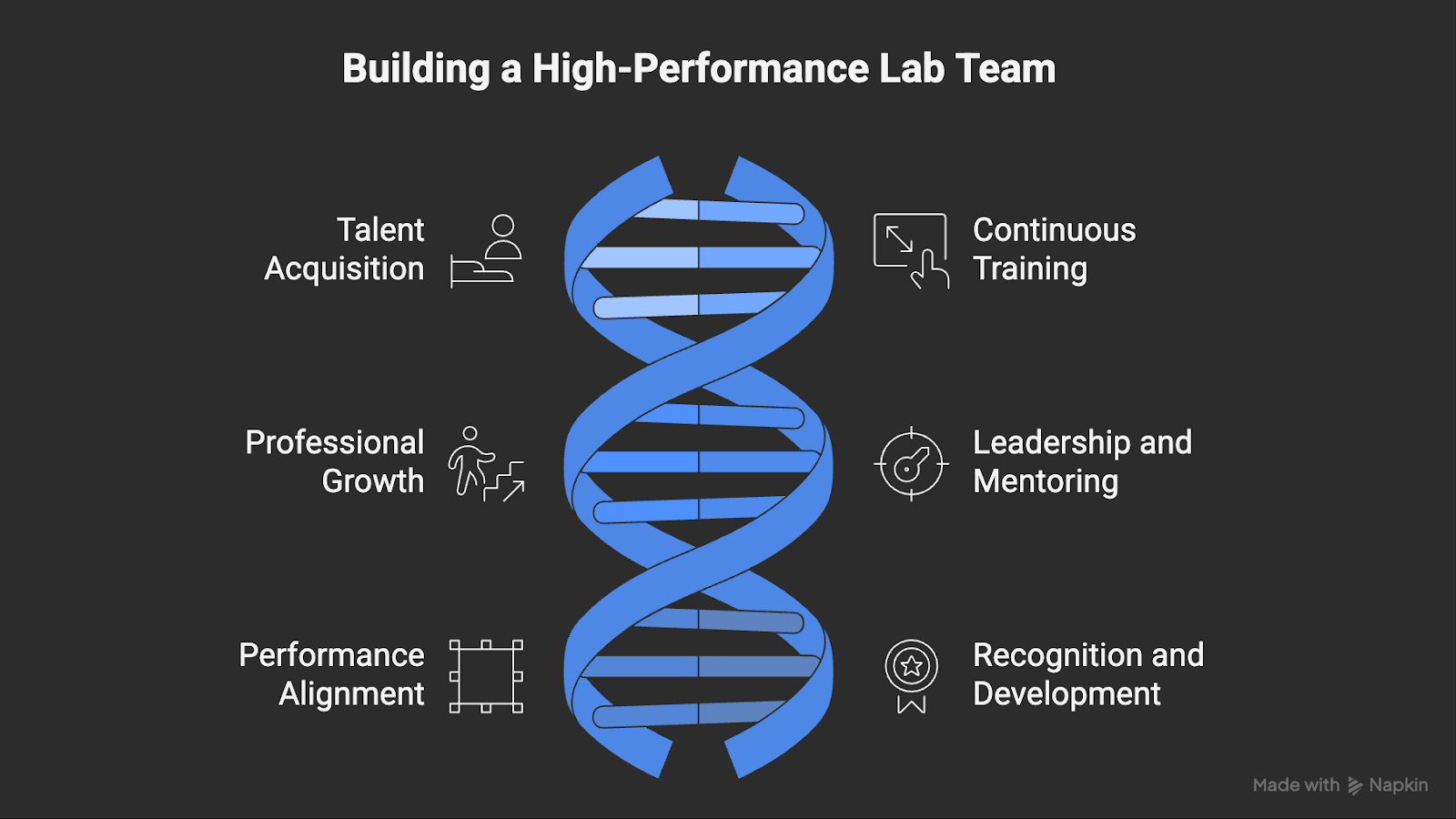
6. Technology Integration and Data Management
It's hard to make progress or maintain reproducibility when information is scattered across devices and disconnected tools. Modern laboratories have implemented digital systems that capture, store, and analyze data efficiently and securely. Solutions like LIMS, ELNs, and AI-driven materials informatics platforms enable labs to streamline data entry, ensure traceability, and enable secure data sharing across teams.
7. Budget and Financial Oversight
R&D labs often operate under tight financial constraints to do more with less. It's vital to maintain and analyze resource, personnel, material, and equipment usage data to balance operational costs without compromising on quality or safety.
In practice, this translates to meticulous tracking of expenditures against project milestones, optimization of inventory to reduce waste, and anticipating regulatory costs that can impact budgets, among others.
Another significant advantage of embedding financial oversight into daily operations is that it ensures decision-makers and leaders have all the data they need to make informed trade-offs between speed, innovation, and cost-efficiency.
8. Collaboration and Communication
In any field or industry, transparent communication practices are the foundation of efficiency and growth. In the laboratory, fostering communication and collaboration means creating frameworks where all project stakeholders can share updates, flag challenges, and align on goals in real time. It also entails structured knowledge-sharing across departments and external partnerships that accelerate discovery.
MaterialsZone's Collaboration Hub directly supports this element by providing a centralized, secure environment where data, insights, and progress updates are accessible to everyone who needs them. By embedding real-time collaboration into everyday workflows, labs can eliminate communication silos and transform teamwork into a driver of efficiency and creativity.

9. Continuous Improvement and Innovation
Alongside team management and development, it’s essential to build an organizational culture of continuous improvement and innovation. It starts with looking at improvement as an ongoing process, and entails regular performance measurements through relevant KPIs and staff feedback review.
Experimentation with new technologies, methods, and approaches rounds out the picture in a way that can enhance your laboratory's output and productivity. From a business perspective, this growth-oriented mindset lays the foundations for adaptability to shifting market trends and regulatory requirements. It also encourages new ideas and promotes effective communication.
10. Intellectual Property and Publication Management
In today's competitive research environment, protecting your discoveries and developments is just as important as making them. Proper intellectual property (IP) management ensures valuable research outputs are protected with clear data ownership policies, patents, and licensing options.
The sharing of findings through publication management accelerates public access to validated results, while complying with relevant regulatory and ethical standards. Formalizing these processes helps protect your competitive advantages while also showcasing your teams' work to the scientific community.
Welcome to the Laboratory Management Efficiency Zone
Efficient laboratory management is a delicate balancing act, but when it's done correctly, it benefits the entire organization. By focusing on these ten essential elements, R&D leaders can empower their lab teams to deliver valuable results.
For materials R&D labs, MaterialsZone's AI-powered materials informatics platform supports efficient laboratory management and increased innovation. Offering a rich feature set that includes centralized data management, extensive collaboration tools, predictive analytics, and workflow automation, it’s a robust, cutting edge solution that helps lab managers streamline operations and adopt Lean R&D principles.
Request a MaterialsZone demo to discover how efficient laboratory management reshapes your R&D outcomes.



.png)
